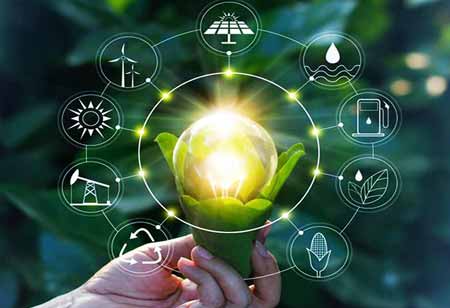Thank you for Subscribing to Energy Business Review Weekly Brief
Transforming Carbon Dioxide Emissions into Clean Fuels
Escalating CO2 emissions from human activities poses a considerable menace to the stability of the planet's climate system.

By
Energy Business Review | Wednesday, June 19, 2024
Stay ahead of the industry with exclusive feature stories on the top companies, expert insights and the latest news delivered straight to your inbox. Subscribe today.
A revolutionary method converts CO2 emissions into clean fuels, surpassing traditional carbon capture techniques and marking a significant step toward sustainability and combating climate change.
FREMONT, CA: Escalating CO2 emissions from human activities poses a considerable menace to the stability of the planet's climate system. Conventional approaches to mitigate these emissions revolve around carbon capture and storage (CCS) technologies, which entail capturing CO2 from industrial sources and sequestering it underground.
Researchers and scientists have embarked on a quest to devise alternative strategies for capturing CO2 and transforming it into valuable resources. The emergence of a novel method, characterized by its exceptional efficiency in converting CO2 emissions into clean fuels, represents a paradigm shift in carbon utilization technologies.
Principles of the Method
The revolutionary method lies in a sophisticated catalytic process that facilitates the conversion of CO2 molecules into high-energy hydrocarbon fuels. Unlike conventional CCS techniques that merely capture and store CO2, this approach harnesses the chemical potential of CO2 as a feedstock for fuel synthesis. Central to the process is utilizing specialized catalysts capable of promoting the desired chemical transformations under mild reaction conditions.
The catalytic conversion of CO2 proceeds through a series of well-defined steps, each governed by specific reaction kinetics and thermodynamic considerations. Initially, CO2 molecules undergo activation on the surface of the catalyst, leading to the formation of reactive intermediates. Subsequent chemical reactions involving hydrogen (H2) or other suitable reductants facilitate the reduction of CO2 to form hydrocarbons, such as methane (CH4) or ethylene (C2H4). The process achieves unparalleled efficiency in converting CO2 emissions into clean, renewable fuels through precise control of reaction parameters and catalyst design.
Technological Advancements
The successful implementation of this method hinges upon cutting-edge advancements in catalysis, materials science, and process engineering. Researchers have devoted significant efforts to developing novel catalyst formulations that selectively promote CO2 conversion while minimizing unwanted byproducts. Catalysts tailored at the nanoscale level exhibit enhanced surface reactivity and stability, enabling superior catalytic performance and longevity.
Furthermore, reactor design and process optimization advances have facilitated this technology's scalability and commercial viability. Integrated reaction systems incorporating innovative separation techniques enable efficient product recovery and recycling of unreacted components, enhancing overall process sustainability. The integration of renewable energy sources, such as solar or wind power, further enhances this method's environmental credentials, enabling carbon-neutral fuel production on a large scale.
Implications for Climate Change Mitigation
The widespread adoption of this revolutionary method holds profound implications for mitigating the adverse effects of climate change and transitioning towards a low-carbon economy. By repurposing CO2 emissions as valuable feedstocks for fuel synthesis, this approach reduces greenhouse gas emissions and mitigates reliance on finite fossil fuel reserves. Furthermore, producing clean fuels enables the decarbonization of various sectors, including transportation, industry, and power generation, thereby contributing to overall emissions reduction targets.
Moreover, using CO2-derived fuels offers a viable pathway toward achieving energy security and independence, mitigating geopolitical risks associated with traditional fossil fuel extraction and transportation. By leveraging abundant and renewable carbon sources, such as atmospheric CO2 or industrial emissions, this method promotes resource sustainability and resilience in the face of evolving energy demands.
Future research directions may focus on enhancing the efficiency and selectivity of catalytic processes, optimizing reactor design for increased productivity and scalability, and exploring synergies with other renewable energy technologies. Interdisciplinary collaboration among academia, industry, and policymakers is essential to accelerate the transition toward a carbon-neutral future and unlock the full potential of CO2 utilization as a cornerstone of sustainable energy systems.
Transforming CO2 emissions into clean fuels represents a landmark achievement of carbon utilization technologies. This method offers a viable way to mitigate climate change, enhance energy security, and foster sustainable development by harnessing the power of catalysis and innovation. With continued research and concerted efforts, this groundbreaking approach promises to reshape the energy landscape and usher in a more sustainable and resilient future for future generations.






